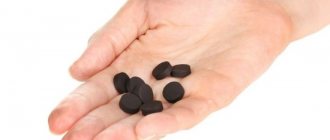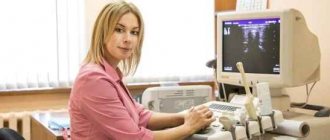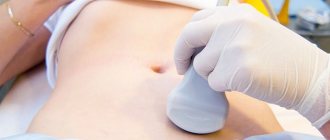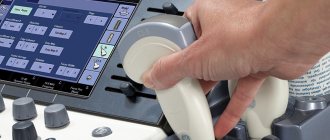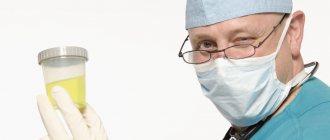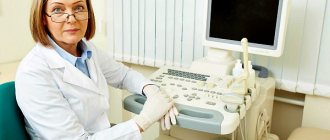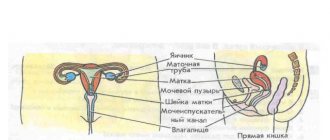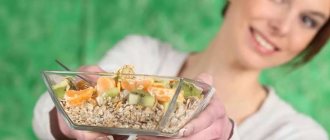Magnetic resonance imaging is one of the most effective diagnostic methods. When scanning the pelvis, the patient needs to prepare in a certain way. There are a number of rules regarding the patient’s clothing and personal belongings, but the main measure required is to adjust the diet.
Preparation for an MRI of the pelvis should begin 2-3 days in advance. The most important principle of the diet is to give up all foods that promote gas formation and increase intestinal motility. This condition is necessary for better visualization of the organs examined on tomography. Otherwise, the intestinal loops will be swollen, which will prevent specialists from obtaining information in the required volume and quality.
Gas-forming foods before MRI
Excessive accumulation of gases is facilitated by the consumption of certain foods and aerophagia (systematic swallowing of air)
From a physiological point of view, the presence of gases in the human intestines is normal. They occur due to swallowed air (during hasty eating, the habit of talking at the table, smoking, chewing gum, etc.), during the digestion of food and as a result of the activity of bacteria. With errors in nutrition and disturbances in the gastrointestinal tract, flatulence is observed, expressed in bloating, belching and a feeling of discomfort in the abdominal cavity. This pathology may interfere with the examination. Therefore, two days before diagnosis, they begin a diet with the exclusion of gas-forming foods (before MRI, it is necessary to reduce the intensity of fermentation processes as much as possible).
Why do some foods cause gas?
Gas-forming foods (the list is presented later in the article) contain large amounts of dietary fiber. Abuse of cabbage, legumes, dairy products and offal can cause intestinal upset.
Flatulence occurs if the diet is dominated by dishes made from vegetables containing a large amount of fiber. In this case, abnormal metabolic activity of the intestinal microflora is observed.
With the systematic consumption of spicy, salty, fatty foods, the natural process of breakdown and absorption is disrupted. Gas formation is often formed due to dysbacteriosis.
Legumes contain a large amount of:
- pectin;
- raffinose;
- stachyoses.
These carbohydrates are not digested in the small intestine and stomach. They enter the large intestine in an undigested form. When these substances are broken down by bacteria, gases are formed.
Flatulence is often observed in people suffering from food intolerance to certain categories of foods. The causes of the pathology can be considered celiac disease and other diseases of a genetic nature. Experts do not recommend eating foods that contain emulsifiers, flavor enhancers and biogenic amines. Substances negatively affect the functioning of the gastrointestinal tract.
Individual intolerance
Gas-forming foods (the list includes some types of meat) are often poorly absorbed in the intestines. Individual intolerance to certain categories of food products develops gradually.
Most often, during the clinical syndrome, the functioning of the gastrointestinal tract is disrupted. Sometimes a person cannot consume dairy products, some fruits, and cereals due to psychogenic factors.
After an intestinal infection or food poisoning, there is a risk of temporary food intolerance. The person refuses to consume the product that caused intoxication for 3-6 weeks. Individual intolerance is sometimes called pseudo-allergy. In adults, this clinical syndrome occurs more often than in children.
| Allergen | Product containing allergen |
| Gluten | Pearl barley, barley, semolina |
| Fresh and canned corn | |
| Margarine | |
| Pasta and bakery products | |
| Pancakes, dumplings, dumplings and other flour products | |
| Boiled sausage, wieners, frankfurters | |
| Lactose | Cottage cheese |
| Ryazhenka, buttermilk | |
| Whole milk | |
| Whole yogurt | |
| Whole condensed milk | |
| Cheeses | |
| Histamine | Peanut |
| Salmon, herring, cod, halibut, pink salmon, hake, flounder, trout, pollock, navaga | |
| Tomato, pineapple, tangerine, orange, grapefruit, lime, lemon, strawberry | |
| Peas, chickpeas, lentils, beans, soybeans | |
| Cinnamon | |
| Mozzarella, suluguni, cheese, processed | |
| Tartrazine | Instant noodles, puree, muesli, cereal |
| Horseradish, mustard, jam, preserves, marmalade (factory production) | |
| Fruit syrups, sports protein syrups), energy drinks, highly and lightly carbonated drinks | |
| Potato, corn chips, popcorn | |
| Buns, cookies, cakes, pastries, custard | |
| Chocolate, candies, lollipops, marzipan | |
| Sulfites | Soybeans |
| Tomatoes | |
| Onions, green onions, garlic | |
| Maple syrup | |
| Quail and chicken eggs | |
| Corn starch, vegetable juice |
In addition to excessive gas formation, symptoms of individual food intolerance include heartburn, epigastric pain, nausea, diarrhea and other dyspeptic disorders.
Binge eating
Gas-forming foods (the list may vary depending on the individual characteristics of the human body) contain complex carbohydrates that are poorly broken down by the intestines.
Flatulence occurs when air accumulates in the digestive tract. The clinical syndrome develops against the background of systematic abuse of products that are incompatible with each other. A person may swallow excess air while eating.
With systematic overeating, in addition to excessive gas formation, dyspeptic disorders occur, manifested in the form of:
- heartburn;
- nausea;
- belching;
- diarrhea.
Flatulence due to abuse of gas-forming food is provoked by insufficient synthesis of digestive enzymes of the pancreas. If a person regularly eats large portions, the stomach walls stretch. The organ is not able to digest food in the shortest possible time.
Wrong food combination
Gas-forming foods (the list includes canned food) may be present in the diet in limited quantities. People suffering from diseases of the digestive tract are advised to choose the right combination of products.
Dishes that contain:
- Legumes combined with meat. These products are difficult for the digestive tract even individually. Peas, chickpeas, soybeans, and beans accelerate the process of gas formation by 2-4 times. Fatty meats (lamb, pork) in combination with legumes can disrupt the digestion process.
- Products containing starch and sugar. If a person has high acidity, then it is not recommended for him to abuse products that contain these substances. When overeating, in addition to gas formation, other dyspeptic disorders (belching, heartburn) are observed. Starch slows down the process of transport of food into the duodenum, sugar initiates fermentation processes inside the intestine.
- Milk and dairy products. Processed foods do not go well with most dishes. Whole milk breaks down at high acidity. The curdling process occurs slowly.
Fermented milk products do not go well with fresh vegetables. Fish, oatmeal, and muesli should not be consumed at the same time as each other.
Washing down fruit with water
Experts do not recommend drinking fresh fruit with water. They contain yeast and sugar, which the body must digest correctly and in a timely manner. The gastrointestinal tract synthesizes enzymes that can break down complex compounds.
Hydrochloric acid is involved in the digestion process, so if you drink fruit with water, the liquid, mixing with digestive juice, can cause colic and flatulence.
If a person systematically drinks water after fresh fruit, the acidity balance in the body is disturbed. The rate of secretion of enzymes involved in the process of breaking down food decreases. Acid destroys the stomach lining, which is why a person experiences heartburn.
List of foods not to eat before MRI
Gas-forming products
The diet for an MRI examination of the abdominal cavity is based on eating food that does not cause fermentation processes in the intestines. This list will help you navigate the variety of food products:
| Products that promote increased gas formation |
|
| Foods that cause moderate gas |
|
| Products that cause minor gas formation |
|
Gas-forming foods include sweeteners, fried foods, salted and pickled vegetables, and multi-ingredient salads. On the eve of an MRI, such foods should be avoided.
MR image of the abdominal organs
A certain combination of foods also contributes to the accumulation of intestinal gases:
Fruit juices and sweets with:
- starchy foods;
- salty food;
- protein food.
Dairy products or milk with:
- pickles;
- fish;
- seafood;
- meat;
- bread;
- sour fruits.
- Cereals with vegetables.
- Bread with sausages and sweet juices.
- Meat and potatoes.
- Carbonated drinks with any meal.
- Legumes and rye bread.
What foods can you eat before an abdominal MRI?
You can include lean fish and citrus fruits in your diet before an MRI scan of the abdominal organs.
To avoid excessive gas formation, it is recommended to follow a few simple rules:
- eat 5-6 times a day in small portions (do not overeat);
- eat at the same time;
- drink about two liters of water a day;
- reduce salt intake;
- Remove spicy foods from your diet:
- onion;
- garlic;
- pepper;
- Consume fruits and vegetables after heat treatment;
- reduce the amount of carbohydrates.
List of foods that you can eat before an MRI examination of the abdominal cavity:
- cereal porridge on water:
- buckwheat;
- barley;
- pearl barley;
- from whole oats;
- from unpolished rice;
- lean meat, poultry;
- seafood, low-fat fish;
- boiled, baked and stewed vegetables;
- berries;
- greenery;
- prunes;
- hard cheeses with a minimum percentage of fat content;
- black bread (in small quantities);
- citrus;
- soft-boiled eggs (one or two per day);
- water soups, weak broths;
- low-fat fermented milk products:
- cottage cheese;
- fresh kefir;
- yogurt.
Drinks allowed are tea without sugar and still water.
What to eat before a pelvic MRI?
Portions should be small for complete absorption of food.
Visualization of the bladder, prostate, uterus, regional lymph nodes, veins and arteries is hampered by flatulence and intestines clogged with formed feces. To obtain the maximum benefit from the diagnosis, preparation for an MRI of the pelvis is necessary.
2-3 days before the magnetic resonance scan, you should switch to a low-fiber diet, eliminating foods and drinks that support fermentation and putrefactive processes. You should not eat before the diagnosis:
- milk and derivatives - cheese, cream, sour cream with more than 15% fat content, sour milk, etc.;
- vegetables (potatoes, corn, peas, beans, cabbage), raw fruits, fresh herbs;
- chocolate, sweets, sugar (preferably honey in small quantities);
- mushrooms;
- seeds, nuts, sesame, poppy seeds;
- seaweed;
- marinades, canned food, semi-finished products, chips, popcorn;
- fatty tough meat with cartilage, lard, smoked meats (sausages, frankfurters, ham, etc.);
- mayonnaise, margarine;
- brown bread, buns, cakes;
- dried fruits;
- hot spices, etc.
It is allowed to include in the menu:
- low-fat yogurt without additives or fillers;
- biscuits, dried white bread;
- cereals (buckwheat, millet, white rice);
- meat, poultry and lean fish (veal, chicken and turkey breasts, cod, navaga, haddock, lemonema, grayling, pike, etc.);
- durum wheat pasta,
- honey (not in honeycombs);
- eggs (no more than two per day, soft-boiled, in the form of steam omelettes);
- not rich transparent broths;
- stewed vegetables (except potatoes).
Dishes should not contain seeds, small bones, grains, or bran. It is preferable to cook food by boiling, baking in the oven, or steaming.
You will need to fast for 4 hours before the scan, so it is best to book your MRI in the morning. If your MRI is scheduled for the afternoon, you can eat a light breakfast. The diet before an MRI scan is aimed at obtaining regular bowel movements and a feeling of lightness in the stomach; if this can be achieved, there is no need to use laxatives.
When administered gadolinium, a contrast agent for magnetic resonance scanning, some patients develop vegetative reactions: nausea, drooling, dizziness, etc. Side effects can be reduced or prevented by having a light snack before leaving home. Sweet tea in a volume of 150 ml and a few spoons of porridge cooked in water will not harm the visualization of the pelvic organs.
Diet in preparation for MRI diagnostics of the abdominal cavity: when can you not adhere to it?
Not all patients are ready to limit their usual diet and go on a diet. Therefore, experts are often asked whether it is possible to eat anything from the list of undesirable foods.
The recommended diet is needed for better visualization so that the doctor can make an accurate diagnosis. Consumption of gas-forming foods promotes swelling of the intestines. And since the abdominal organs are located quite closely, a change in the size of one of them leads to pressure, displacement and disruption of the others. As a result, the survey results may be incorrect.
An MRI of the abdominal cavity must be performed on an empty stomach. If the magnetic resonance procedure is scheduled for the morning, you will go to the medical center without having breakfast. The meal the day before should take place no later than six hours before the doctor's visit. You can drink it four hours before. If an MRI examination of the gastrointestinal tract is planned for the second half of the day, you are allowed to eat something light in the morning (weak, unsweetened tea with crackers, etc.). You should also refrain from smoking, eating candy and chewing gum.
Young children should be fed three hours before an abdominal magnetic resonance imaging scan.
When children undergo MRIs, the restrictions are less strict. The time of the last meal depends on age: infants are fed three hours before the abdominal examination; older children’s bodies can withstand four to six hours without serious discomfort.
When preparing for a procedure using a contrast agent, the algorithm of actions and the list of foods that you can and cannot eat are exactly the same.
Is it possible to eat before an MRI of the brain and spine: gas-forming foods
MRI is one of the most complex and high-tech types of research. People who need to undergo an examination often ask their doctor what they should eat and drink before an MRI and whether it is possible to eat food immediately before the examination?
As a rule, it is not at all necessary to resort to drastic changes in the daily routine. The doctor, having agreed with the patient on the date and timing of the procedure, explains how to properly prepare for the study.
He focuses on what you need to take for examination and how to behave during a tomography.
If necessary, adjustments are made to the diet and gas-forming products are excluded from the list of permitted products.
How to properly prepare for a tomography?
MRI does not require any serious preparation. Only occasionally, usually during an abdominal scan, may a person be asked to follow a special diet the night before the procedure.
Before scanning, you must remove all metal objects from yourself: earrings, bracelets, watches, glasses, piercings, etc.
If a specialist has doubts about the presence of metal-containing elements in the patient’s body, then the patient is sent for an X-ray examination. We must not forget about tattoos, since the inks contain metal particles.
The patient's clothing should not contain metal parts, because as soon as the MRI machine starts scanning, they will begin to be attracted to the tomograph. There is a risk of injury.
Diagnosis is often carried out using a contrast agent, which makes the images as clear as possible. The contrast is injected into a vein, and in some cases causes side effects in the patient. He may feel:
- nausea;
- burning at the injection site;
- headache;
- dizziness.
You should tell your doctor about all health-related problems:
- recent operations;
- chronic illnesses;
- liver and kidney diseases.
What can you eat before an MRI of the brain and spine?
Usually, before performing a tomography of the brain and spine, there is no need to deny yourself anything. You can eat your usual foods and drink any liquids, except alcohol.
The upcoming examination does not affect your usual daily routine in any way. If a person is prescribed medications, they can also be taken, but this issue should first be discussed with the attending physician.
If a person is to have the coccygeal spine scanned and the pelvic organs examined, the bladder should be full. A person must drink enough liquid.
When scanning the lumbar spine, the patient will have to slightly limit himself in food. Due to active intestinal peristalsis, images are unclear. You can have a snack a few hours before the procedure, and the MRI itself is performed on an empty stomach. During lumbar MRI, the bladder should be emptied shortly before the procedure.
Sometimes the patient is given anesthesia before the examination of the brain or spine is performed. This is necessary to immobilize him, relieve pain or help cope with fear. If you are going to undergo an MRI under anesthesia, then your last meal should be taken 6-8 hours before the procedure, and you should not overeat.
As soon as a person wakes up from anesthesia, he will be allowed to take the first sip of water after 30-40 minutes, and he will be able to eat after a couple of hours. Breastfeeding babies are put to the breast 5 hours before the examination, and bottle-fed babies can eat 6 hours before the procedure.
Can I eat before an MRI scan with contrast?
Your attending physician will tell you how to prepare for an MRI with a component that “illuminates” the tissue and what not to do. Typically, experts recommend not eating heavy food, limiting yourself to a light snack.
To minimize the risk of these adverse reactions, it is advisable to completely abstain from food several hours before the examination.
List of gas-forming products
Increased gas formation occurs due to the consumption of plant foods high in fiber:
- legumes;
- any types of cabbage;
- radishes and radishes;
- much more.
When preparing for an MRI, your doctor may ask you to avoid carbonated drinks, salty and spicy foods. Flour products containing yeast cause flatulence; it is better not to consume them on the eve of tomography.
Sometimes the wrong combination of foods contributes to gas formation in the intestines. As a rule, people themselves notice which gas-forming products actively affect their body and lead to bloating. They should be excluded from the diet.
Alcohol before a tomography
Everyone knows that ethanol has a detrimental effect on human health. It is necessary to adhere to the “prohibition law” 2 days before the procedure. It is important to know that alcohol intoxication is a direct contraindication to tomography. A drunk person behaves inappropriately; he may be excessively active and irritable.
Ethanol leads to changes in metabolic processes. Brain MRI results will be incorrect. Alcohol, entering the blood, leads to dilation of blood vessels, then dehydration of the body occurs, and the blood vessels narrow.
Alcoholic drinks are a neurotoxic poison for the human body; they can destroy brain cells. The results of scanning patients with hangover syndrome are shocking to many. In the photographs you can see how irreversible organic changes occur in the brain as a result of alcohol abuse.
Source: https://vedmed-expert.ru/mrt/o-diagnostike/mozhno-li-est-pered-mrt.html
Can I drink alcohol before an abdominal MRI?
Drinking alcoholic beverages is contraindicated before an MRI of the abdominal organs.
Alcohol is strictly contraindicated before magnetic tomography of the abdominal cavity. At least two days before the planned diagnosis, you must completely stop drinking alcohol.
The ban is due to the following reasons:
- The MRI method requires the patient to remain completely still during scanning. An examination of the abdominal organs can last from 30-40 minutes to an hour. It is impossible to predict how a drunk person will behave in a confined space. Therefore, such a patient will simply not be allowed to undergo the procedure.
- Alcoholic drinks put a lot of stress on the liver and gallbladder, which negatively affects the examination results.
- Alcohol is a gas-forming product; after drinking it, flatulence and intestinal upset may occur, which interferes with MRI.
- When diagnosing the abdominal cavity, contrast agents interact with ethyl alcohol molecules, which can worsen the health of the patient.
- In preparation for magnetic resonance imaging, you may need to take antispasmodic medications. Alcohol neutralizes their effect, which will affect the scan results.
- Patients who are terrified of the MRI procedure are given sedatives before the examination. In combination with alcoholic beverages, the opposite to the expected effect cannot be ruled out.
Can I drink before a pelvic MRI?
In order for the intestines to function correctly, it is necessary to maintain an optimal water regime by drinking at least 1.5 liters of liquid per day
Kvass, beer, sparkling wines, lemonade, carbonated mineral water contribute to bloating, so you should avoid drinking these drinks. It is not recommended to quench your thirst with sweet compotes and jelly, strong coffee and tea before an MRI. Vodka, cognac and other alcohol-containing drinks irritate the gastrointestinal tract, causing inflammation, and therefore should be excluded.
Here is a list of what you can drink before a pelvic MRI:
- juices without pulp;
- herbal teas and decoctions;
- weak coffee;
- water;
- light compotes (no sugar, with a small amount of non-acidic fruits or berries).
For better visualization, the bladder is viewed in a full state, therefore, 1.5-2 hours before the diagnosis, they refrain from going to the toilet, and 40 minutes before the procedure, drink 500 ml of liquid. The uterus, cervix, appendages, prostate are assessed after urination.
